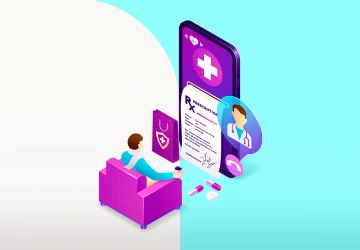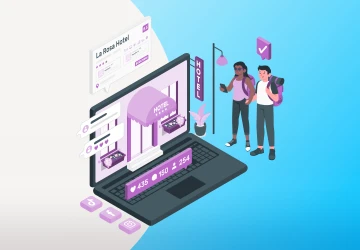Engineering Blog Ideas to Connect, Educate, and Inspire

Engineers are great at solving tough problems, but when it comes to sharing that knowledge outside their team, things can get a little tricky.
That’s where engineering blogs come in.
They’re a great way to capture real project insights, highlight important industry trends, and let your team’s voice shine in the wider tech world.
And no, it doesn’t have to be a chore.
I’ve put together a bunch of easy and creative content ideas to help you kick off—or level up—your engineering blog.
In this guide, you’ll learn how to turn everyday work into stories that connect with other engineers, future teammates, and potential clients.  How to Come Up with Content Ideas for Your Engineering Firm Blog?
How to Come Up with Content Ideas for Your Engineering Firm Blog?
1. Leverage Analytics and Performance Data
One of the easiest ways to come up with content ideas for engineering blogs is by looking at your website analytics.
This shows you which pages people visit the most and what kind of content they enjoy.
Once you see what’s already working, it becomes much easier to come up with new topics your audience will care about.
Keep things simple.
If you have a big or complicated topic, try breaking it into smaller posts or even turning it into a series.
That way, it’s easier to explain, and you also get more content to work with.
You can also find great content ideas in your existing white papers and datasheets.
These documents are full of valuable information, but they’re often written in a very technical way.
Instead of sharing them as-is, try rewriting parts of them in a more relatable way—maybe from the angle of a problem your team solved.
This kind of content is helpful for people who are looking for real-world solutions, not just specs.
And since technical documents can be tough to read, turning them into blog posts makes the information easier to understand—and more enjoyable to read.
2. Monitor Social Media Trends
A lot of great content ideas for engineering blogs can come straight from your audience.
Seriously, just take a look at your social media comments, replies, or even direct messages.
People love asking questions, sharing opinions, and suggesting topics.
Often, those little conversations are exactly what spark your next blog post.
Whether it's someone commenting on a LinkedIn post, leaving feedback on your blog, or starting a thread in a forum, they’re telling you what they’re curious about.
All you have to do is listen.
When you pay attention to these questions and suggestions, you’re not guessing—you’re creating content your audience wants to read.
One more great place to look?
Quora. It’s full of people asking specific questions—many of them about industry trends and project insights.
Browsing around can show you what problems engineers are facing or what topics they’re hungry to learn more about.
That’s content gold right there.
And here’s a quick bonus: If you answer some of those questions on Quora and include a link to your blog, it can also give your SEO a little boost.
So it’s not just good for ideas—it’s good for visibility too.
3. Highlight Recent Projects
The human race is always seeking stories, especially the kind where real people solve tough problems.
That’s why engineering blogs work so well when they highlight actual projects.
It’s not just about showing off your work—it’s about walking readers through the journey: what went right, what went wrong, and how your team made it happen.
Talk about the tools and tech you used, how you tackled delivery, and even what challenges came up along the way.
You don’t need to share every little detail—just enough to show how you solved a problem.
These kinds of posts are perfect for showing industry trends and giving your readers real project insights.
Got a project proposal lying around?
That can easily turn into a blog post.
Just take out anything sensitive—like client names, pricing, or timelines—and focus on the big picture.
What problem were you solving? How did your team approach it?
Break it into clear sections so it's easy to follow, and try to include as much of your actual solution as you can (without giving away anything you shouldn’t).
A short idea isn’t enough—you want to show that your team knows its stuff.
And if you're worried about competitors copying your ideas, don’t be.
Think about it—how often do you read a competitor’s blog and steal their work?
Probably never.
4. Showcase Problem-Solving Expertise
Sometimes, the best content starts with the most common problems.
Every industry has those recurring issues that everyone deals with—simple, everyday challenges that you and your competitors solve all the time without thinking twice.
But here’s the thing: not everyone knows how to fix them.
That’s where engineering blogs can shine.
Pick one of those common problems and break it down.
Write a post that explains the issue and walks readers through your solution—step by step, with no fluff.
Make it so detailed and helpful that anyone Googling the issue can’t help but land on your post.
Some people might grab the idea and run with it, sure.
But others?
They’ll read it, realize it’s more complex than they thought, and reach out for help.
That’s how a blog post turns into a new client.
This kind of content is especially great for sharing project insights.
Show how you approached the problem, why your solution works, and maybe even what you’d do differently next time.
Many engineers love learning how others solve things, and your perspective could spark fresh ideas or offer much-needed clarity.
Plus, when you share these real solutions, you position yourself as a go-to expert.
You’re not just giving advice—you’re proving that you know your stuff.
5. Translate Technical Content
Back when I was just getting started in content for engineering firms, I remember staring at this massive, super-dense technical document.
It was a 40-page internal report on a water filtration system—brilliant work, but nearly impossible to read unless you were the one who built it.
The engineers were proud of it (rightfully so), but they didn’t think anyone outside the team would ever care.
Challenge accepted.
I spent a weekend reading it like a novel, pulling out the key themes and problems it solved.
Then I turned it into a short blog series—each post focusing on a different part of the system and explaining the “why” behind the tech in plain English.
No jargon. No overload.
Just clear stories, practical value, and a human touch.
Within a month, those posts became some of the most-read on the site.
We saw a bump in traffic, but more importantly, we got emails.
Real people—prospective clients—reached out to ask questions, dig deeper, and start conversations.
That’s when it clicked for me: Engineering blogs don’t have to be complex to be smart.
They just need to connect.
So if you’ve got a whitepaper, a research doc, or even a presentation that’s been collecting dust, revisit it.
There’s probably gold in there.
Translate it. Simplify it. Share it.
When you turn your technical brilliance into stories people can understand, you don’t just educate—you inspire.
And yes, those repurposed insights?
They often reflect real project insights and industry trends your audience is hungry for.
6. Stay Updated on Industry News
One thing people love about engineering blogs is hearing your take on what’s happening in the industry.
Readers don’t just want the news—they want to know what it means for them.
What does that new tech change? How could a regulation affect the kind of work they do?
That’s where your insight shines.
Keeping up with industry trends isn’t just helpful for your audience—it helps you, too.
It keeps your content flowing and builds your reputation as someone who knows their stuff.
Over time, that makes your blog the place people turn to for clarity and real-world context.
Here’s the thing: News sites don’t always get it right.
Sometimes they oversimplify, leave out key details, or miss the technical angle altogether.
That’s your opportunity to jump in, break it down in your own words, and give people a better understanding of what’s going on.
So, make it a habit to follow industry updates.
Whether that’s through trade magazines, Google Alerts, or LinkedIn, it’s all about staying in the loop.
Then, turn what you’re learning into blog posts filled with practical project insights and your take. 7. Review Tools and Technologies
7. Review Tools and Technologies
Every day, there’s a new tool, app, or platform popping up in the engineering world—each one claiming to save time, cut costs, or make things just a little bit smarter.
Some end up being forgettable, but others?
They become staples in your everyday workflow.
And that’s where your engineering blog comes in.
Chances are, your team already has a trusted set of tools you rely on—whether it’s a design software that’s never let you down or a problem-solving tool that’s saved you more than once.
But have you ever shared the story behind how you chose those tools?
This kind of post doesn’t need to be a formal review.
Just walk readers through things like:
How did you build your toolbox?—Was it trial and error? Experience? A brilliant tip from a teammate?
Why did you pick some tools over others?—What problem were you trying to solve?
What’s changed?—Any tools you recently ditched or replaced with something better?
These stories are helpful.
Because the truth is, other engineers are wondering the same things you used to: “Which tool should I use for this?” or “Is this software worth it?”
So, instead of just listing specs or features, tell it like it is.
Share what worked, what didn’t, and what surprised you.
Keep it real and make it personal.
That kind of honesty builds trust—and might just help someone else make a smarter decision.
And don’t worry, you don’t need to review everything out there.
Just talk about the tools you use and believe in, especially the ones your ideal clients might be curious about.
8. Explore Legislation and Standards
Okay, so no one wakes up excited to read legal documents—unless you're into that sort of thing (no judgment).
But if you're in engineering, laws and standards matter more than most people realize.
A small change in safety rules, building codes, or certifications can change how you do your job.
That’s where your blog comes in.
You don’t need to turn into a lawyer (and don’t give legal advice).
Just be the voice that says, “Hey, here’s what’s new—and here’s what it might mean for us.”
You’re helping your readers stay ahead of the curve without having to dig through pages of legal jargon.
Here’s how to make it work:
Break it down in plain English—What’s new? What changed?
Share your take—Does it help? Does it complicate things? What should people be paying attention to?
Link to the source—Always give your readers a way to check the full details themselves.
Most engineers just want the bottom line—what’s relevant and what to do about it.
When you help them get that quickly and clearly, you’re doing more than sharing news—you’re building trust.
9. Feature Your Team
People love to know who’s behind the scenes, especially in engineering.
Sure, the technical stuff is important, but it’s often the people who make the biggest impact.
Featuring your team on your blog is a great way to show the human side of your company and add some personality to your content.
Why does this matter?
Simple—readers are curious about the people driving the projects.
They want to know who’s behind the work, how your team handles challenges, and what makes them tick.
By sharing staff profiles, you’re giving your audience a behind-the-scenes peek into the people who make everything happen.
Here’s how you can make it interesting:
Create staff profiles that go beyond the usual job title. Highlight their skills, experiences, and what drives them. Make it fun, show their personality!
Share stories about how your team works together, tackles challenges, and celebrates victories. It’s all about showing the teamwork that fuels your success.
Ask for feedback from your readers. See which posts they enjoy most, and use that info to make your future content even better.
This type of content does wonders for your blog.
It adds variety, helps your readers connect with the people behind the work, and gives your brand a more relatable, human touch.
Plus, you’ll get to see how much engagement it sparks!
10. Share Insights from Events
Not all of us can make it to every big engineering conference or trade show.
Between packed schedules, travel budgets, and project deadlines, attending in person isn’t always an option.
But the curiosity?
That’s always there.
Engineers want to know what’s new, what’s next, and what others in the field are talking about—and that’s where your blog can step in.
If you or someone from your team gets the chance to attend, treat it like an opportunity to report back.
Write a post that captures the energy of the event: the trends people couldn’t stop discussing, the standout innovations on display, and the key takeaways from the talks or panels you sat in on.
You don’t need to cover everything—just what genuinely stood out to you and how it might impact the work your readers are doing.
Keep the tone natural, like you’re filling in a colleague over coffee.
What surprised you? What didn’t live up to the hype? What ideas got you thinking differently about your own projects?
These honest reflections go a long way because they’re grounded in real experience, not just event marketing.
And try to post your insights while they’re still fresh—both for you and for your readers, who are scrolling for updates and reactions.
11. Explain Processes and Decisions
Reaching the final decision on which technology or approach to use isn’t always a smooth ride.
It’s usually the result of long discussions, trial and error, and stacks of internal notes.
That’s exactly the kind of behind-the-scenes story that makes engineering blogs so valuable.
Your audience isn’t just curious about the result—they want to understand how and why you got there.
And when you explain it, you’re not just sharing knowledge—you’re offering real project insights and showing that you’re tuned into relevant industry trends.
Let’s say your team recently switched to PostgreSQL after years of using MySQL.
A blog post explaining why you made the switch, what challenges pushed you there, and what improvements you’ve seen since would be golden.
Or maybe you’re moving away from Kubernetes because it’s overkill for your current scale.
That’s a story worth telling too, because others are likely facing the same crossroads.
The beauty of this content is that you probably already have the core of it written.
Maybe it lives in a Slack thread, a project memo, or an internal doc.
All it takes is organizing that thought process into something readable and relatable.
A post like “Why We Chose Redis Streams Over Kafka” or “Switching from .NET to Node.js: What We Learned” not only helps others but also boosts your credibility as someone who thinks critically and strategically.
These posts position your blog as more than just a place for updates—they turn it into a hub for thoughtful, experience-based content grounded in real-world industry trends.
And they help your audience feel less alone in their decision-making.
Because if you’ve been through it and mapped out your thinking, chances are, someone else is about to walk that same path—and they’ll be grateful you left a light on.
12. Celebrate Culture and Values
Engineering blogs aren’t just about code, tools, or systems—they’re also about the people behind the work.
If you want to stand out, it’s important to show that your company culture matters just as much as the projects you deliver.
That human side is what helps readers connect with your brand on a deeper level.
Think about it: Readers love getting a behind-the-scenes look at what it’s really like to work at your company.
What does a normal day look like for one of your engineers? How do they solve problems? What keeps them motivated?
A post like “A Day in the Life of a Developer at [Your Company]” can go a long way in showing your team’s vibe—and it doesn’t need to be formal or flashy.
Just tell the story in a real, honest way.
You can also dive deeper by sharing short interviews or personal stories from team members.
Why did they join? What challenges have they faced? What do they love most about their role?
These kinds of posts add personality and help your readers feel like they know the people behind your brand.
The bonus?
Alongside the storytelling, you’re still offering project insights and showing how your team adapts to industry trends.  13. Engage with Customers
13. Engage with Customers
Your customers are the heartbeat of your business, and there’s no better way to show off your skills than by telling their success stories on your engineering blog.
Sure, getting clients to open up about how your custom solutions saved the day can feel like a daunting task, especially with all the legal red tape.
But here’s a little secret: You don’t have to dive straight into the legal minefield!
Instead, turn to their marketing or web team.
Offer a simple trade—a backlink to their website in exchange for a small endorsement.
Marketing teams are always looking to boost their SEO, and that link could be just the thing they need.
Suddenly, the web team is on your side, helping you get the green light from the client to share their story.
Once you’ve got the approval, you can weave a tale of how your solution came to the rescue.
Maybe it solved a major problem, made their processes more efficient, or gave them a competitive edge.
This kind of real-world success ties directly into industry trends and provides valuable project insights that others can learn from.
14. Promote Thought Leadership
Success is not just about delivering the right solution—it’s about shaping the future with your insights, experiences, and leadership.
Engineering blogs give you a perfect place to share your journey, ideas, and strategies with the world.
They let you step away from just the technical details and show off your expertise, creative thinking, and the best practices that make you stand out in the industry.
Imagine writing a post like “How We Made Incident Management Effortless” or “Building a Serverless Architecture That Works for Everyone.”
These aren’t just manuals or technical guides—they’re stories about how your team solved problems, tackled challenges, and improved your work.
They turn your everyday project insights into lessons that others can learn from.
When you share your industry trends and the strategies that helped you succeed, you invite others to learn from your journey.
It’s like having a friendly chat where you mentor a wide audience on turning obstacles into opportunities.
15. Deep Dive into Technical Topics
Sometimes, it can be tricky to figure out how to explain a complicated technical project in a way that’s both interesting and easy to understand.
That’s where the power of engineering blogs comes in.
When you break down a recent project you’ve worked on, you offer readers a behind-the-scenes look at how everything came together.
It’s not just about the finished product—it’s about sharing the thought process, the team effort, and all the challenges you faced along the way.
For example, imagine writing a post like “How We Built Our AI-Powered Recommendation Engine” or “Why We Switched to a Kubernetes-Driven Architecture.”
These posts aren’t just step-by-step guides—they tell the full story, from brainstorming ideas to overcoming obstacles.
You’ll share the decisions you made, the tough moments, and even the lessons learned along the way.
This way, you give readers a deeper understanding of how your team works and approaches challenges.
And don’t forget to talk about why you made certain choices.
For instance, writing about “Why We Chose Serverless for Our Data Pipeline” or “Why We Built Our Internal Chatbot” helps readers understand not just the tools you used but the reasoning behind them.
This insight shows your strategic thinking and helps potential collaborators or job candidates get a feel for your team’s mindset.
FAQs
How Do I Start an Engineering Blog?
Start by identifying topics you're passionate about, then create a simple, user-friendly blog platform. Share your knowledge, document your projects, and engage with your audience.
Is a Tech Blog a Good Idea?
A tech blog helps showcase your expertise, build credibility, and engage with like-minded professionals. It’s a great way to stay relevant in the industry.
Why Do Companies Have Engineering Blogs?
Engineering blogs allow companies to share insights, showcase their work, and attract top talent. They also build brand trust and demonstrate expertise in the field.
Final Thoughts
As promised, we’ve covered practical, creative ways to bring your engineering blog to life—turning technical work into powerful stories that highlight your team’s voice, share real project insights, and track evolving industry trends.
The key?
Write while it’s fresh.
Capture your team’s thought process in the moment, not months later, so readers get the full context and clarity.
Have questions or want help brainstorming your next post?
Reach out—I’d love to chat and help you build something great.







